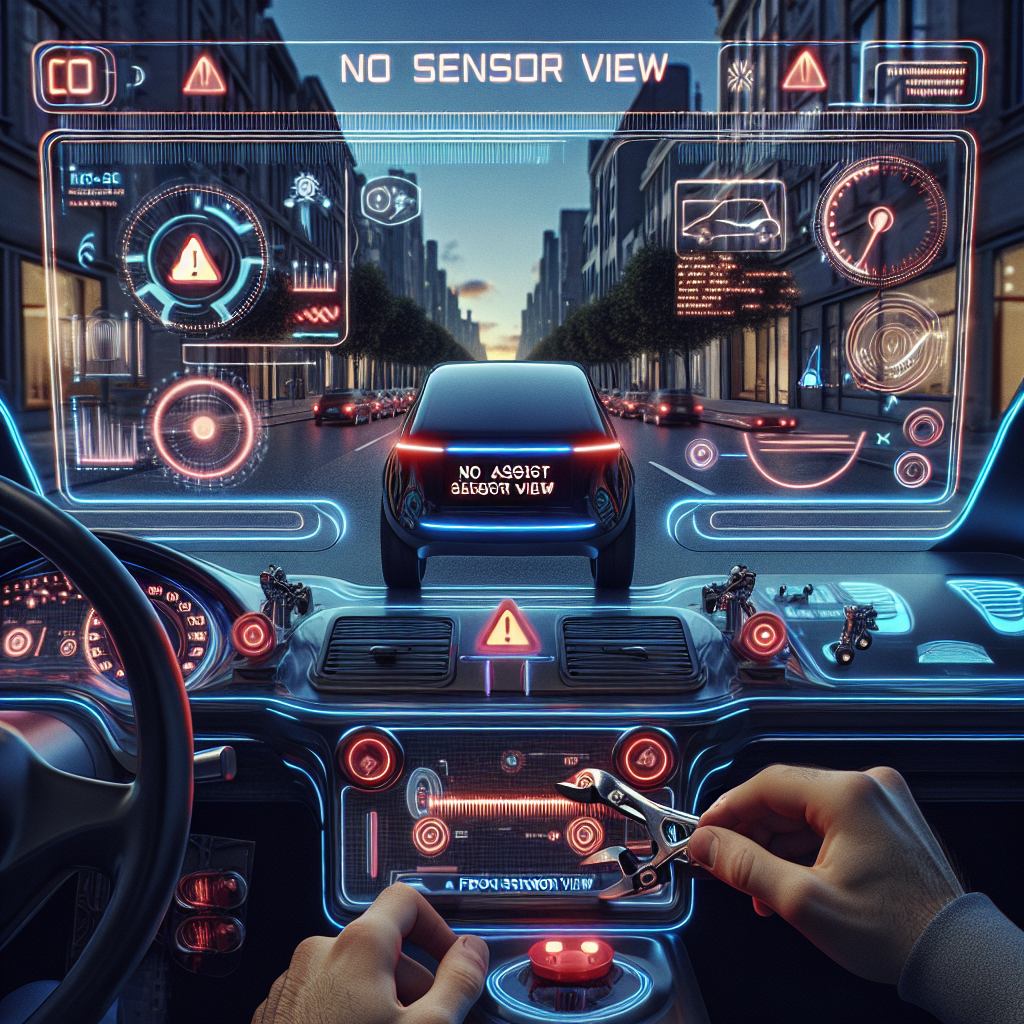
Introduction:
Welcome to the comprehensive guide on how to fix the "Front Assist No Sensor View" issue, specifically tailored for 2024 vehicles. As a car enthusiast and seasoned mechanic, I have firsthand experience dealing with this problem and understand how frustrating it can be. In this guide, we will demystify the issue, provide step-by-step instructions on how to fix it, and share some best practices for optimal performance. Let’s dive in!
Understanding the Front Assist No Sensor View Issue
What is Front Assist?
Front Assist is an advanced driver-assistance system that uses sensors to detect potential collisions and automatically applies brakes if necessary. It’s a crucial feature for enhancing your driving safety.
Symptoms of No Sensor View Issue
When the Front Assist system is experiencing a "No Sensor View" issue, you may notice warning lights on your dashboard or messages indicating sensor blockage. This problem can drastically affect the system’s performance.
Diagnosing the Issue
Step 1: Visual Inspection
Perform a visual inspection of the sensors located in your vehicle’s front bumper. Look for any visible obstructions like dirt, snow, or debris.
Step 2: Sensor Calibration
Sometimes, the sensors need recalibration. Refer to your vehicle’s manual for specifics on sensor recalibration procedures.
Step 3: Electrical Check
Use an OBD-II scanner to check for any faults in the sensor’s electrical connections. This can help identify wiring issues or faulty sensors.
Tools Required
To fix the Front Assist No Sensor View issue, you will need:
- OBD-II Scanner
- Microfiber Cloth
- Calibration Tool
- Replacement Sensors (if necessary)
Step by Step Fix
Step 1: Clean the Sensors
Use a microfiber cloth to gently clean each sensor. Be careful not to scratch the sensor surface. Dirt or debris can often be the culprit behind sensor blockages.
Step 2: Recalibrate the Sensors
Using the calibration tool, follow the instructions provided in your vehicle’s manual to recalibrate the sensors. This helps in resetting the system and may resolve the "No Sensor View" issue.
Step 3: Check Wiring and Connections
Inspect the wiring and connections to the sensors. Ensure that they are secure and free from corrosion. A loose or damaged connection could interrupt the sensor’s function.
Step 4: Replace Faulty Sensors
If cleaning and recalibration don’t resolve the issue, you may need to replace faulty sensors. Use the OBD-II scanner to identify which sensor is malfunctioning, then follow your vehicle’s guidelines for sensor replacement.
Preventive Maintenance Tips
Regular Cleaning
Regularly clean the sensors to prevent build-up of dirt and debris. This can prolong the life of the sensors and maintain the system’s functionality.
Frequent Calibration
Perform regular calibrations as advised in the vehicle’s manual. Keeping the sensors properly calibrated ensures optimal performance.
Inspecting Electrical Connections
Periodically check the electrical connections for any signs of wear or damage. Replace any faulty wiring immediately.
Common Mistakes to Avoid
Using Harsh Cleaning Agents
Avoid using harsh chemicals or abrasive materials when cleaning the sensors. This can damage the sensor surface and affect its performance.
Ignoring Warning Signs
Do not ignore warning lights or error messages related to the Front Assist system. Prompt action can prevent more serious issues down the line.
DIY Sensor Replacement Without Proper Tools
Replacing sensors without the correct tools or knowledge can lead to further complications. When in doubt, seek professional assistance.
Advanced Troubleshooting
Software Updates
Ensure your vehicle’s software is up-to-date. Manufacturers often release updates that can fix known issues with the system.
Professional Diagnostics
If you’re unable to resolve the issue, consult a professional mechanic. They have advanced diagnostic tools and expertise that can pinpoint and fix the problem.
Sensor Alignment
Incorrect alignment of the sensors can also cause the "No Sensor View" issue. Ensure that the sensors are correctly positioned according to the manufacturer’s specifications.
Real-Life Case Study
Case Study: John’s 2024 SUV
John noticed the "No Sensor View" warning on his 2024 SUV. After performing a visual inspection, he found that one of the sensors was covered with road salt. John cleaned the sensor with a microfiber cloth and recalibrated the system using the vehicle’s manual. The issue was resolved without needing further repairs.
Conclusion
Fixing the Front Assist No Sensor View issue may seem daunting, but with the right tools and knowledge, it can be straightforward. By following this guide, you can diagnose, fix, and maintain your vehicle’s Front Assist system for optimal performance. Always remember, regular maintenance and prompt action are key to keeping your car’s safety features in top shape.
Frequently Asked Questions
1. What causes the Front Assist No Sensor View issue?
Multiple factors such as dirt, debris, sensor misalignment, and faulty wiring can block the sensor view, leading to this issue.
2. Can I fix the No Sensor View issue myself?
Yes, you can follow the steps in this guide to diagnose and fix the issue. However, if the problem persists, seek professional help.
3. How often should I clean the sensors?
It’s recommended to clean the sensors at least once a month or more frequently if you drive in harsh conditions.
4. Do I need a professional for sensor calibration?
Sensor calibration can be done at home if you follow the vehicle’s manual. However, if you’re not confident, it’s best to consult a professional mechanic.